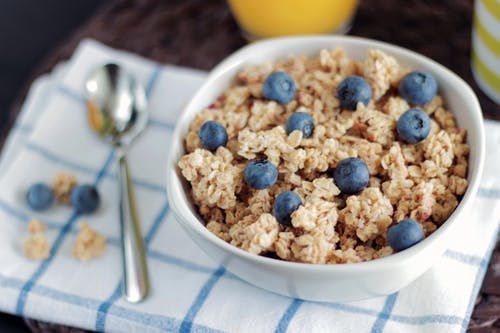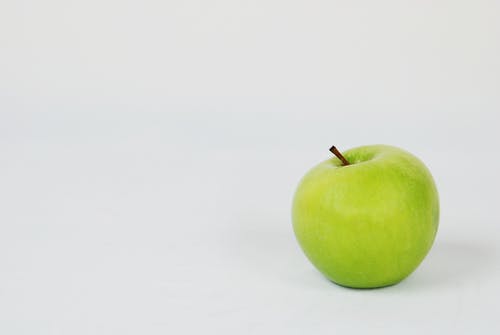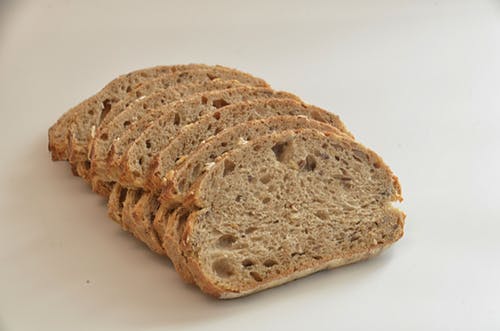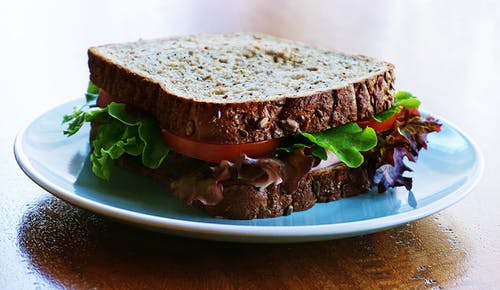By Angela Bates a Recent ASU Nutrition Student
Fiber is a very important carbohydrate. Normally, carbohydrates are broken down by the body to be used as energy in the form of glucose, but fiber does not get broken down by the body, helping the body with many functions. According to EatRight.org, women should try to get at least 25 grams of fiber per day, while men should try for 38 grams. Harvard School of Public health says that the average American only eats about 15 grams of fiber per day, well below the recommended amounts. With intake of fiber lacking so much, it is important to look at the reasons fiber is important for the body.
Although it sounds too good to be true, fiber can lower the risk of certain forms of cancer, regulate digestion and prevent colon issues, improve cholesterol levels, reduce heart disease risk and lower blood pressure, reduce the risk of type 2 diabetes, and help you feel full longer so you may consume less calories. That’s quite a list for a plant material already in many foods we love!
There are two types of dietary fiber, which can be important depending on what you need fiber to do for you. The first type is soluble fiber, which is in fruit flesh, oats, beans, peas, some vegetables, psyllium, and barley. During digestion, soluble fiber attracts water and forms a gel, which can help bulk and dry waste for easier digestion. Soluble fiber is the form that can help lower glucose and cholesterol levels. Insoluble fiber is the second type of fiber, which come from fruits and vegetables (especially skins), beans, and whole grains. This type of fiber helps prevent constipation because it does not dissolve in water but instead adds bulk and helps keep things moving.
A couple of things to keep in mind when increasing your fiber are what you want to help your body do, increasing water intake, and knowing issues that may arise if you have bowel disorders. If you know you want to lower your cholesterol or keep your glucose in check, soluble fiber is your friend. If you have trouble with constipation or infrequent bowel movements, try to get a bit more insoluble fiber. Whatever form of fiber you take in, water is needed to help it work or you may risk pain and other gastrointestinal issues.
If you have IBS or another bowel disease, be sure to go slowly when adding fiber and seeing how your body reacts, advises Dr. Melissa Majumdar of Brigham and Women’s Center for Metabolic and Bariatric Surgery. As a general rule, if you have diarrhea or similar symptoms, soluble fiber can help absorb extra water and slow down your digestion for some relief. If your issue is IBS-C, constipation, you may want to add more insoluble fiber to ensure things are moving well. Regardless, when adding fiber, it is normal to experience some gas and bloating, but be sure to drink your water and the fiber will do its part!
So how should you get more fiber in your diet? Here are a few ways that you can make small changes to up your intake today.
- Start Your Day Right

Why not start your day with a heaping helping of fiber? Eating cereal, hot or cold, every day can increase your fiber quite a bit. Topping your cereal right can help too. A bran flake cereal can provide around 5 grams of fiber to start your day off strong. Oatmeal is a great source of soluble and insoluble fiber, giving you 4 grams per cooked cup. You can add chia or flaxseeds for a bigger boost. Topping your cereal with some fruit slices or berries can add quite a few grams to your breakfast. Raspberries have about 8 grams per cup, while raisins provide 1 to 2 grams per serving, along with potassium.
Adding a pear, with the skin, to your meal adds over 5 grams of fiber, along with other important nutrients. Rather than drinking orange juice, which has less than a gram of fiber, have a whole orange. A medium orange can provide 4 grams of fiber and around 80 percent of your vitamin C. The morning is also the best time to rehydrate, as you tend to dehydrate overnight. Drinking a full glass of water when you wake up can help the fiber you eat for breakfast work well.
- Eat the Whole Fruit or Vegetable

Smoothies and juicing have been very strong trends in recent years. Although taking in extra vitamins and minerals is rarely a bad thing, you will miss out on a lot of fiber. Without the peel, an apple only has 2 grams of fiber. With the peel, you double that fiber to 4 grams. The same goes for potatoes, cucumbers, grapes, and berries with seeds. Juices may taste great and provide a lot of fast energy from carbohydrates and vitamins, but you may find yourself very hungry after, since there is little to no fiber in them. Smoothies from popular smoothie cafes may not utilize whole fruits and vegetables, so you may not get the fiber benefits.
If you love smoothies, make your own at home with whole fruits and vegetables. Frozen fruits can make a cold smoothie in just a few minutes. If you’re a green juice fan, try a green smoothie to get the fiber and the vitamins. Whole apple with peel is a great natural sweetener for your smoothie, so you can cut out some sugars and get more fiber.
- Swap Out Your Carbs

Pasta, bread, crackers, and rice are all great and comforting foods, but are they really helping you? With the new wave of gluten free pastas, you could go from 1 to 2 grams of fiber in your spaghetti to 13 grams of fiber with garbanzo bean pasta and your celiac friend could join you for dinner. If garbanzo bean pasta isn’t your favorite, just swapping from traditional pasta to whole grain can give you 7 grams of fiber.
Crackers and cheese are an old favorite snack, but your Ritz or saltines are not providing even one gram of fiber. Don’t be fooled by the Ritz “Baked with Whole Wheat,” which only provide 1 gram of fiber. One look at the ingredients shows they are made with normal what flour, not whole grain. Instead, even Wheat Thins, Mary’s Gone Crackers, or Triscuits offer 3 grams of fiber and can be found at most grocery stores. When purchasing bread, use the same rule as crackers. If the first ingredient is not a whole grain, it’s probably full of refined carbohydrates.
White rice is delicious, but it is a refined grain, not a whole grain. In processing, white rice has the bran and germ, which have fiber and nutrients, removed from the grain. According to University of Pittsburgh Medical Center, many companies fortify their white rice, as you can see on the package, to replace nutrients removed during milling. While brown rice has more calories (by just a bit), it also packs more protein and a lot more fiber than white rice. It is also a good source of selenium, which is important for immunity and thyroid function. Brown rice has a lower glycemic index and rather than not even one gram of fiber, like white rice, it has 2 to 3 grams per serving.
- Try Some Fibrous Snacks & Lunches

When you want to reach for potato chips, try some salted air-popped popcorn instead. While potato chips have approximately 1 to 2 grams of fiber, popcorn has over 3 grams per serving. According to the Popcorn Board, one serving of popcorn can provide 70 percent of your daily whole grain intake, which can help you reach fiber goals. If something other than popcorn sounds better, try broccoli and ranch or a trail mix, but check labels to make sure the serving size is what you eat, and the sugar is low. Berries also make a great snack you can take with you.
Don’t stop at the sub shop and get a sandwich full of processed foods and low fiber. Pick a bread with whole grains—seeds are a bonus if you like them! After adding some leftover meats from dinner last night or low-sodium deli meat, topping with tomato and lettuce adds about 2 or more grams of fiber to your lunch. For even more fiber, swap your ketchup or mayo with avocado or hummus. This can another gram of fiber. Take a whole fruit for a side as well.
If salad is your lunch of choice, try adding bulgur wheat, barley, quinoa, and beans, all of which have high amounts of fiber and provide other important nutrients. Orange sections, sliced almonds, and rice are other fun add-ins with fiber. If you bake your own cookies, muffins, or breads, consider swapping your flour for whole grain and adding some flaxseeds for fiber!
For more articles with tips and tricks of healthy eating check out our Fill Your Plate Blog. For recipes that the whole family will enjoy check out our recipe section.

